Key questions
- What are the sources of electricity?
- What effects does electricity have and how are they utilised?
- How is the electrical power of a device calculated?
The widespread use of electricity has fundamentally changed society. Electricity comes from power plants, where energy is released from natural energy sources for human use. The energy is converted into rotational motion of a turbine, and then into electricity in a generator for transmission. The most common types of power plants that generate electricity with a generator are nuclear power plants, hydroelectric power plants, wind power plants, and various thermal power plants. Alternating voltage is produced in the generator, which generates alternating current. Solar power plants also produce electricity, but their electricity production is based on converting solar radiation energy directly into electricity without a generator.
Power plants are connected to electricity distribution networks. These networks enable the transfer of energy in the form of electricity for societal use. The electricity produced in power plants is made available for household use through wall sockets.
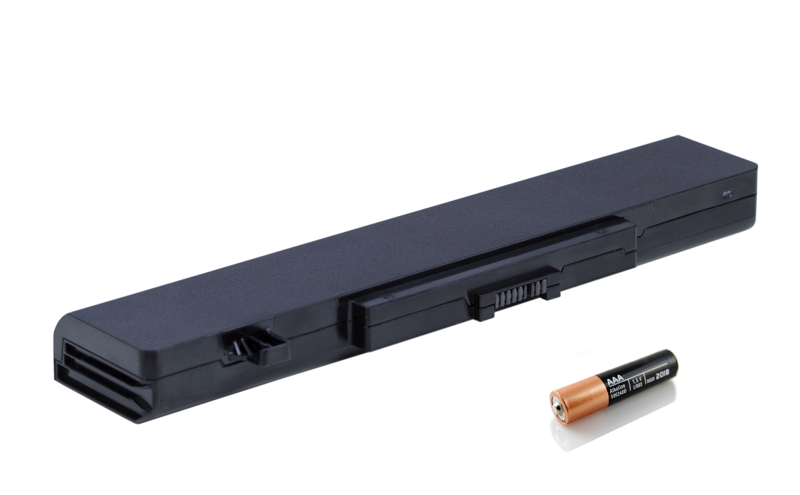
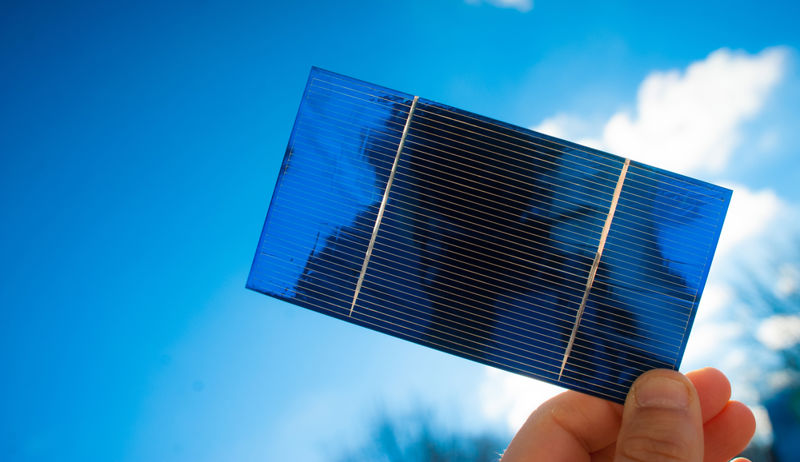
Not all electrical devices need to be connected to the mains voltage. Instead, the power source can be, for example, a battery or accumulator. They produce direct voltage and direct current. The battery and accumulator have a positive charge side (anode) and a negative charge side (cathode). The type of battery or accumulator determines the materials used for the anode and cathode. Both batteries and accumulators contain substances harmful to the environment, so they are recycled as hazardous waste.
The generation of voltage in a battery or accumulator is based on chemical redox reactions. Chemical energy is converted into other forms in devices via electric current. Unlike a battery, an accumulator can be recharged, restoring its chemical energy reserve.
A solar cell converts the energy of light particles into electrical energy of charged particles. A photon, or light particle, strikes the surface of the solar cell, freeing an electron. The solar cell is constructed from a semiconductor in such a way that the freed electrons move in only one direction. This generates direct voltage and direct current. Silicon is the most common semiconductor material used in solar cells. In addition to energy production, solar cells are used in a variety of devices, from space probes to pocket calculators. The photovoltaic phenomenon behind the solar cell is explored in more detail in the eight modules of high school physics.
The number of electric cars in traffic is continuously increasing. The chart shows the development of electric car sales in the world.
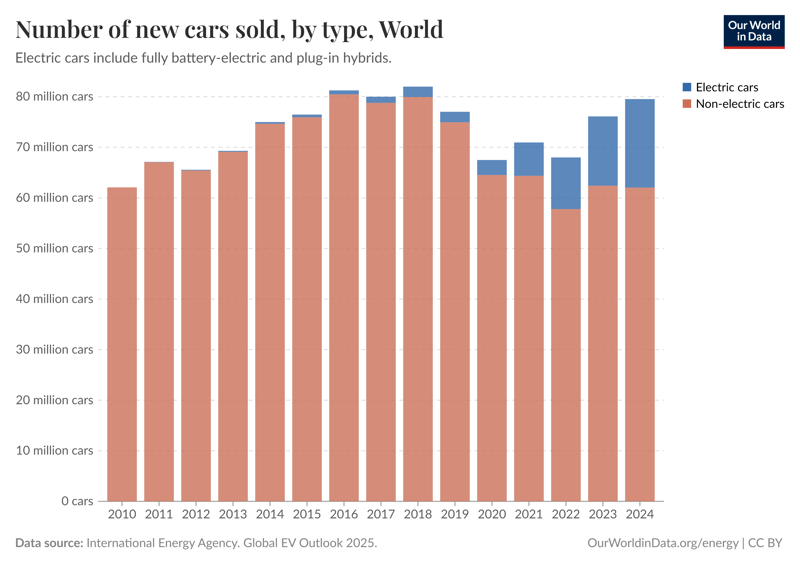
When talking about electricity, it often refers to electric current. The generation of electric current requires a charge difference, or voltage. Voltage is formed when electric charges are not evenly distributed within a substance, object, or between objects. Electric current is created when charges move in an attempt to equalise the charge differences.
Charge moves through a substance in a manner characteristic of that material. In metals, charge transfers efficiently, and they are electrical conductors. Electrical conductors are typically made of copper or aluminium. In addition to metals, conductors include liquids containing ions, such as non-distilled water. In metals, charge is transferred via electrons, and in ionic solutions via ions.
In plastics or rubber, charge transfer is poor. They are electrical insulators. Metal conductors are coated with insulation to prevent electric current from escaping the conductor. Insulators are materials in which electric charges cannot move easily. They have a solid lattice structure (for example, ionic compounds such as table salt), or they are solid materials composed of large molecules (such as plastics or paper).
Gases, such as air, are also insulators. In such materials, electrons are bound to individual atoms or molecules and cannot move between the structural components of the material. Electric charge differences also equalise through the insulator if the voltage is high enough. A dramatic example of this is lightning striking through the air.
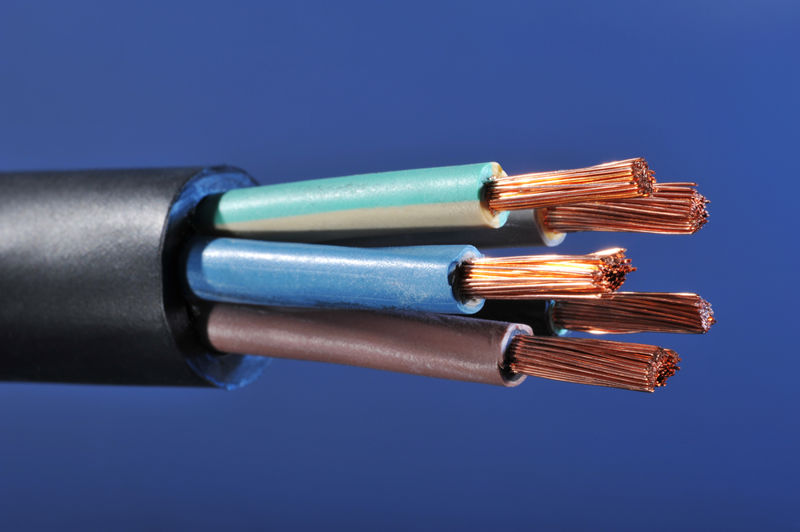
In an electrical wire, the conductive material, such as copper, is protected by insulation, such as rubber or plastic. If the insulation is damaged and a person comes into contact with the conductor, the electric charges flowing through the wire can pass through the person. The person touching the wire would then receive an electric shock.
The properties of materials are utilised when constructing various components. Components allow electric current to flow in a controlled manner and produce desired effects of electric current. Structures made of components are called electric circuits. The field of science related to controlling electric current is called electronics.
Electric current causes various phenomena. As a result,
All parts of electrical devices, including conductors, resist the formation of electric current to some extent. Moving charges collide with the particles of the material and transfer energy to it. As a result, the material heats up. This is often undesirable, but heating can also be utilised. A heating element is a component designed to generate heat through electric current. For example, an electric kettle contains a resistor that heats up. The heat from the resistors is transferred to the water by conduction and radiation.
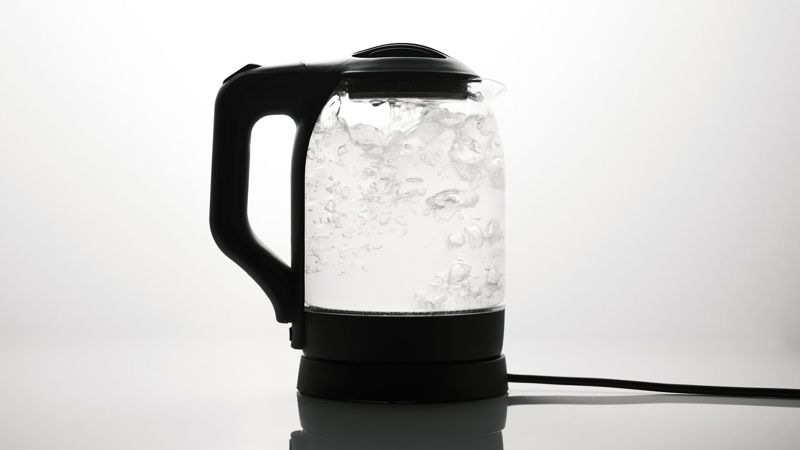

Electric current generates light in several different ways. If the temperature of a material rises high enough due to the electric current, the material starts to emit visible light in addition to thermal radiation. Light production can also be based on changes in the energy states of electrons. A light-emitting diode (LED) operates on this latter principle, and its operation is introduced in section 7.3. The operation of other light sources is discussed in later Resonance textbooks.
In an electric motor, the energy transmitted by electric current is converted into mechanical energy. The magnetic effect of the electric current generates a force that drives the motor. Electric motors come in various designs and are found in many types of devices, such as power tools, computers, vacuum cleaners, or fans. Especially electric cars and other electrically powered vehicles have become more common in the 2020s.
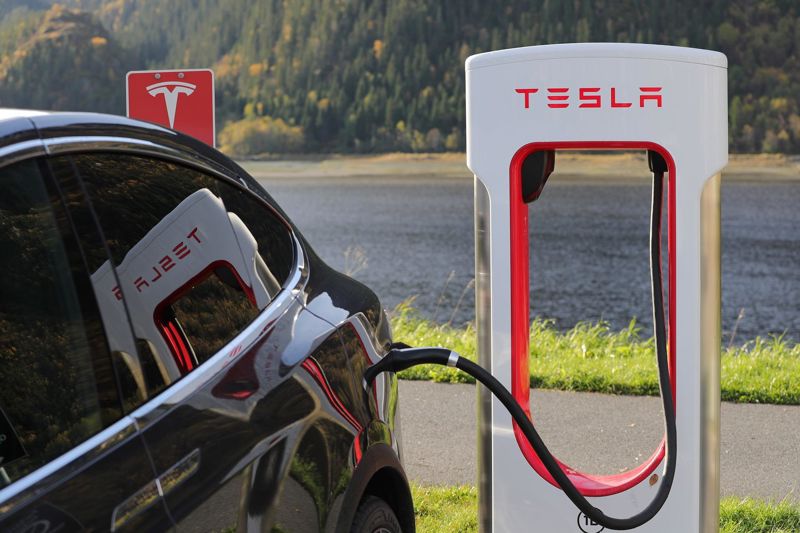
Electronics has spread to a wide range of applications since the early 20th century and is an essential part of modern society and its applications. Electronics are needed to control the operation of devices, such as starting a washing machine or using a computer. Wireless data transmission also occurs through electricity. The movement of charges can generate electromagnetic waves, in which the transmitted message is encoded. For example, radio waves and WLAN connections operate on this principle.
The energy consumption of electrical devices was examined in the textbook Resonance 2. Since devices can be used for arbitrary periods of time, their power is specified. The power of a device, , is the ratio of the change in energy to the usage time .
Since power represents the rate of energy consumption of an electrical device, the energy consumed by the device, , is obtained by multiplying the power and the usage time .
.
The power of an electrical device is usually indicated on the rating plate found on the device, which also includes information about the operating voltage. The power of the electrical device is calculated using the device's voltage and the electric current in it. This law is derived in section 5.3, where the generation of electric current is discussed in more detail.
If the device uses alternating current, the power is calculated using the average values of voltage and current in terms of energy consumption. These values are referred to as the effective voltage and current. For example, the 230 V voltage from a socket is the effective value of the mains voltage.
Electrical devices cannot convert all the energy associated with their use into a useful form. The efficiency indicates how much of the energy transferred with the electricity is converted into the energy form required for the device's intended purpose.
Electricity has a price, which consists of sales and transmission costs as well as taxes. The price of electricity varies according to factors related to consumption and production. The price of electricity ranges from almost zero in some countries to the order of magnitude of 0.5 US$/KWh in some areas. Prices tend to fluctuate significantly.
When calculating the cost of electricity, the energy unit is converted into kWh. In this case, power is expressed in kilowatts (kW) and the device's usage time in hours (h).
1. What kind of voltage is obtained from the following sources of electricity?
a. Rechargeable battery
b. Mains socket
c. Solar cell
2. In the cable of a mobile phone charger, the core is
3. In the cable of a mobile phone charger, the outer layer is
4. The power of an electrical device is calculated as the product of the voltage and the electric current.
The power of the electrical device is 55 W. The maximum electric current in it may be 2.5 A.
a. From the definition of electric power, voltage can be determined.
The voltage of the electrical device can be a maximum of 22 V.
b. From the definition of power, energy can be determined.
Energy can just as well be expressed in kilowatt-hours:
The device consumes approximately 10 kWh of energy per year.
The efficiency of the electric kettle is 89%. It is connected to a 230 V mains voltage. The kettle heats 1.2 litres of water to boiling from an initial temperature of 12 °C in 4 minutes 10 seconds.
a. 89% of the energy transferred by electricity increases the internal energy of the water, raising its temperature.
The power of the kettle is approximately 2.0 kW.
b. Electric power
The kettle has a current of 8.6 amperes.
1. Which power plants generate electricity and which produce heat for useful purposes?
a. Nuclear power plant
b. Waste-to-energy plant
c. Wind power plant
2. Connect the item to direct current (DC) or alternating current (AC).
a. Hydroelectric power plant generator
b. Solar cell
c. Computer battery
d. Wall socket
1. Glass

2. Copper
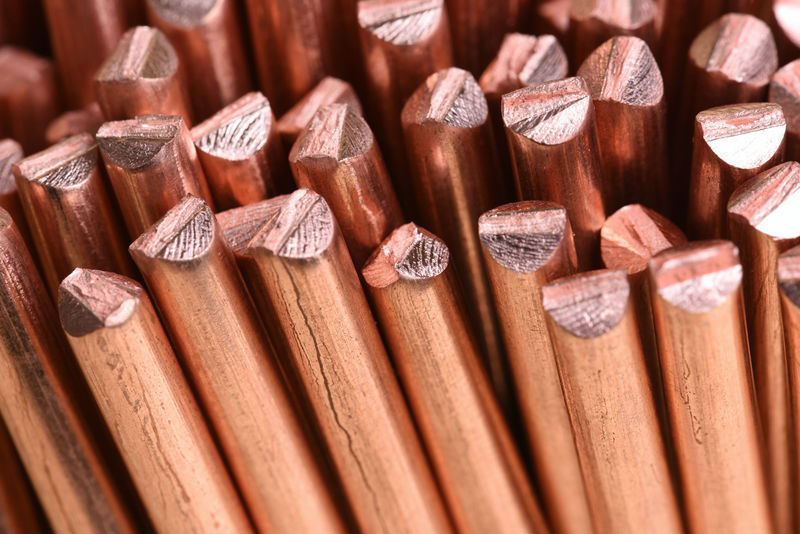
3. Tungsten
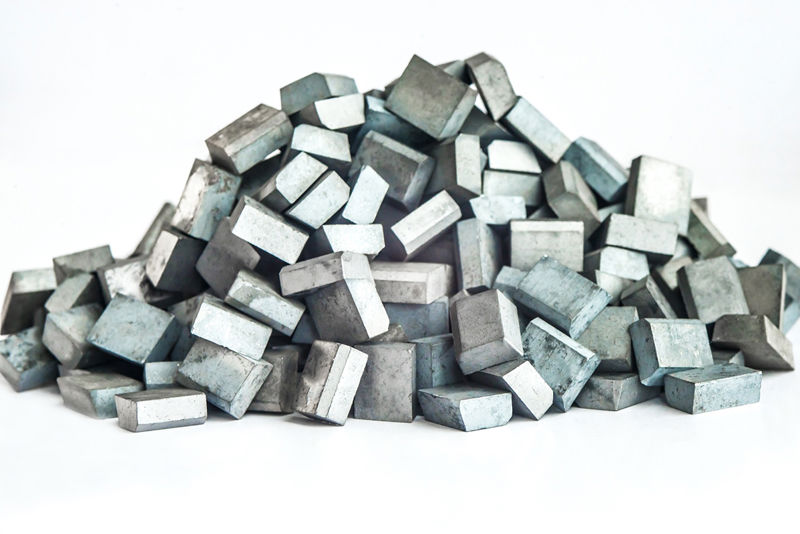
4. Paper

5. Silicon
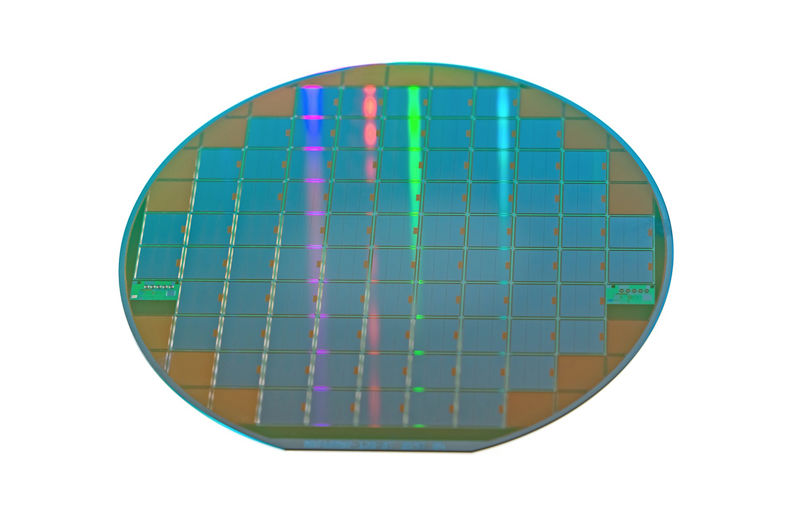
6. Neon-gas
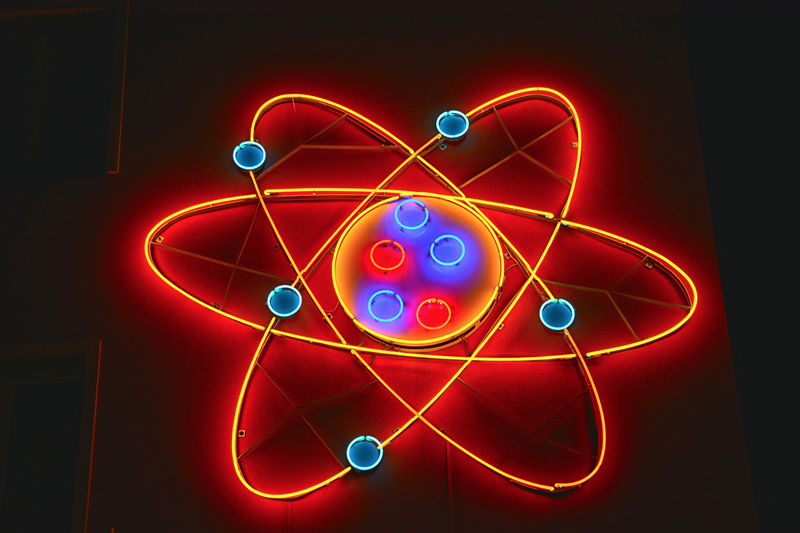
7. Solar cell material

8. Raspberry juice

9. Graphite
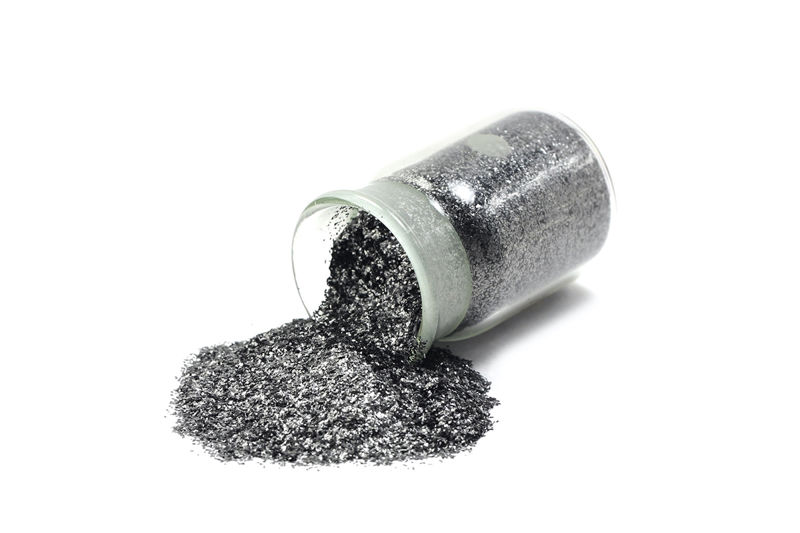
10. Table salt

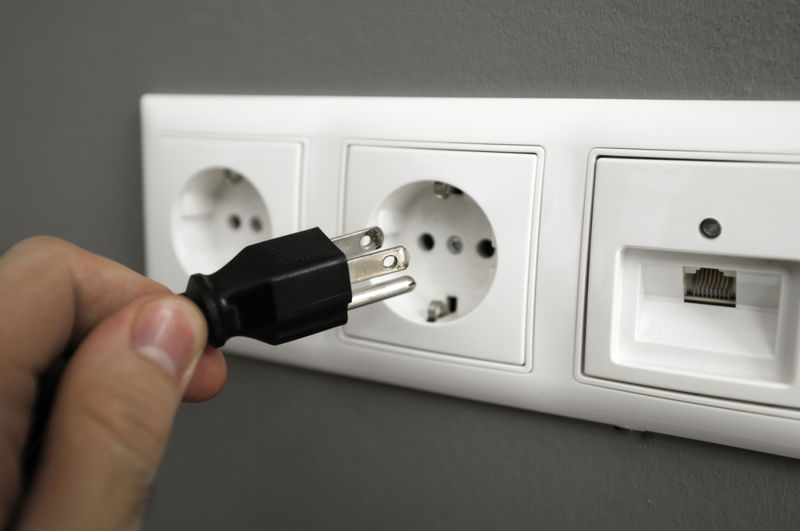

What would you like to do with the text? The text is processed by artificial intelligence, it is not checked or edited! The text may contain errors. Check the accuracy of the text against the original text in the textbook.
Choose the files you want to add. Supported formats are txt, html, htm, pdf, odt, odp, ods, xls, xlsx, ppt, pptx, pps, doc, docx, rtf, png, jpg, jpeg and gif.
| Name | |
|---|---|
| remove |
NB! Links must begin with: “http://”!
Opiq uses essential cookies to make our website work, to help keep you safe, to analyse user interaction and to improve user experience.
Cookie is a small file which is sent from users computer to the website server. It includes necessary information for the website to operate and includes information about the user and their preferences.
Most of the cookies are necessary for the operation of Opiq. It is possible to deny analytical cookies and in that case your usage data is not used to develop and improve Opiq services. Read more